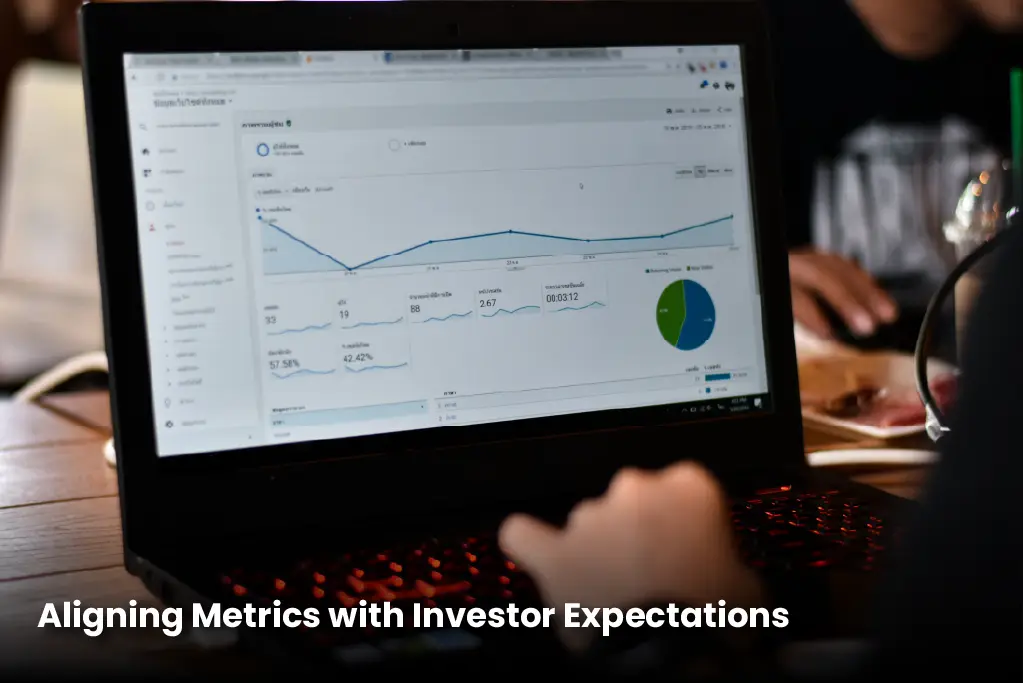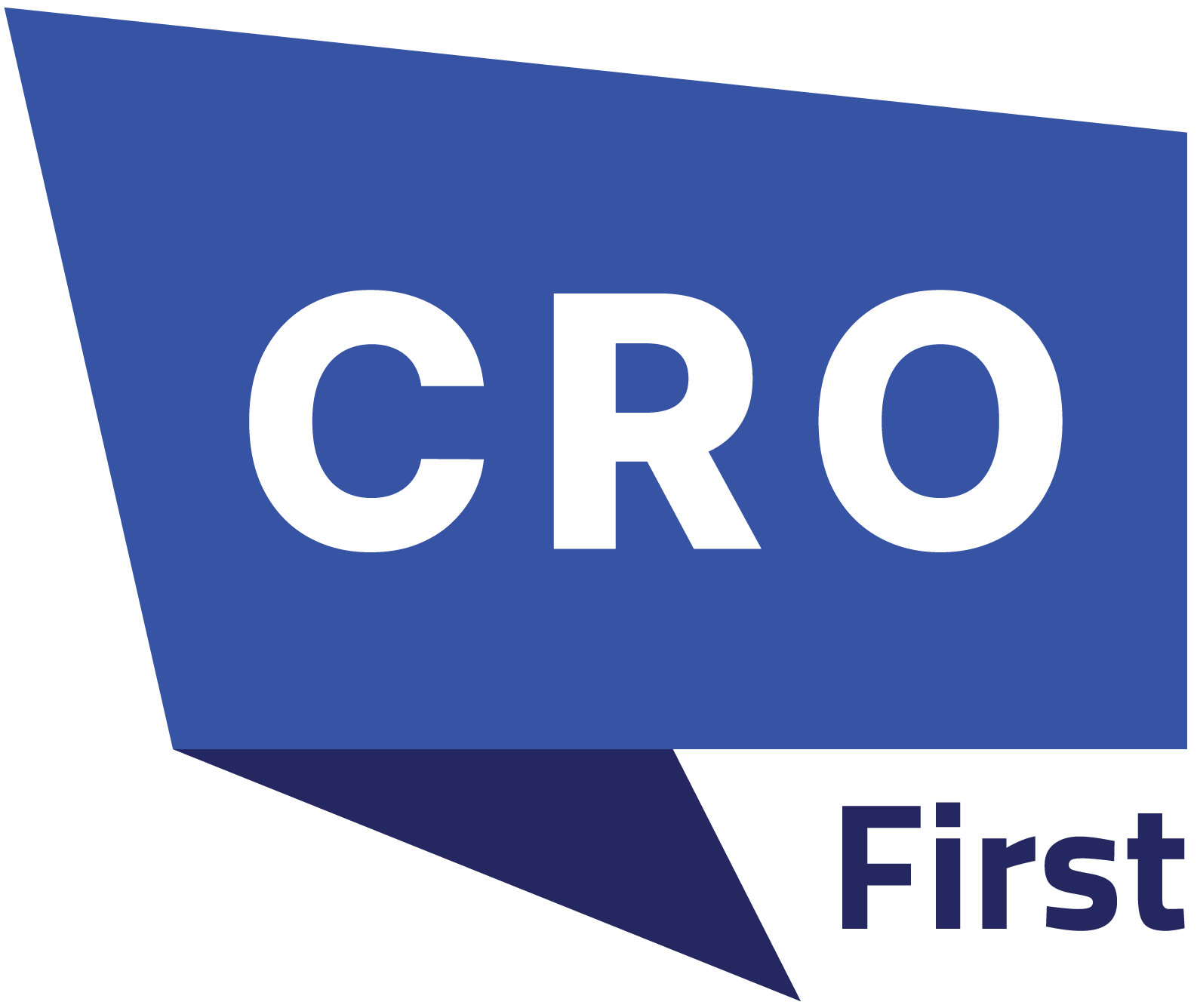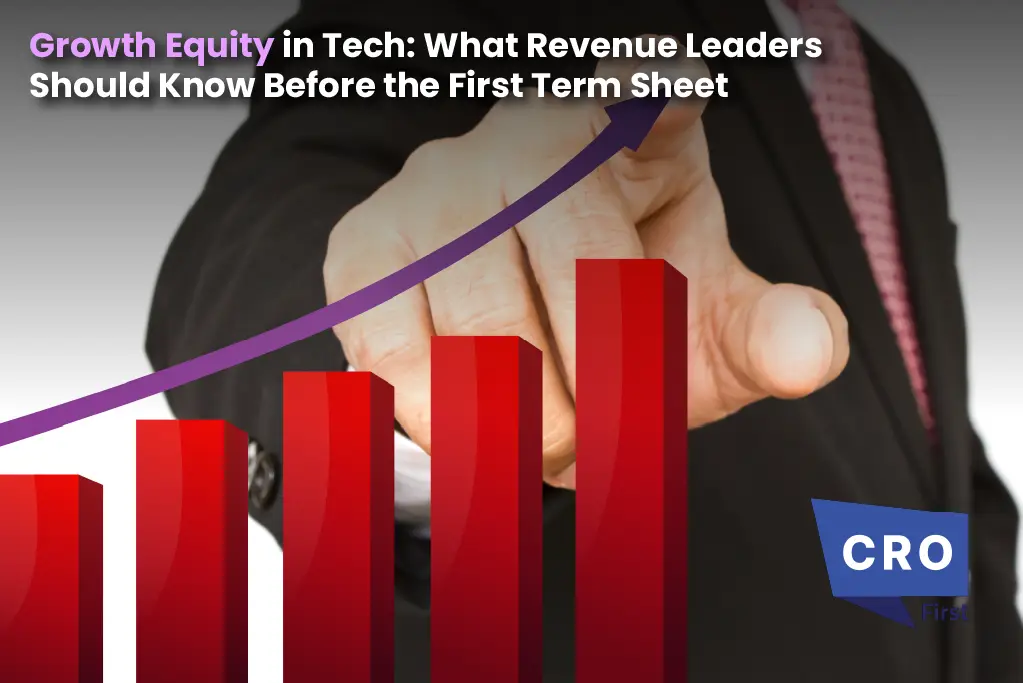As technology companies scale beyond product-market fit, interest from growth equity investors often signals a pivotal moment. For founders, it represents capital to accelerate expansion. For revenue leaders, CROs, Heads of RevOps, and GTM strategists, it raises an entirely different set of questions. Growth equity brings not only capital but expectations around revenue predictability, efficiency, and scalability.
This article explores the revenue-side implications of bringing on growth investors. It outlines the data, metrics, and structural readiness revenue leaders should evaluate before a term sheet lands. The goal is to equip CROs and RevOps leaders with a clear lens on what matters when capital meets scale.
Growth Equity Is Not Just About Capital, It’s About Repeatability

Growth equity investors prioritize operational maturity. While early-stage funding often focuses on vision and market potential, growth capital is underwritten on repeatable performance. Revenue leaders should understand that once a term sheet is issued, their numbers, playbooks, and forecasts will come under scrutiny, not just from a CFO’s standpoint, but as levers of enterprise value.
Investors want to see evidence of consistent pipeline coverage, disciplined conversion rates, and scalable customer acquisition. They assess whether revenue performance is driven by systems or individuals, whether growth is organic or discount-driven, and whether GTM execution can support the next 2–3x multiple.
For CROs, this means preparing to justify not just the ‘what’ but the ‘how.’ Growth equity firms will look closely at the maturity of the sales process, segmentation strategy, channel mix, and customer success motion. Data hygiene, operational cadence, and forecast accuracy are as critical as headline growth.
Recent growth equity rounds highlight this investor focus on scalable, repeatable revenue engines. For instance, in February 2025, 73 Strings raised US$ 55 million in Series B funding led by Goldman Sachs Growth Equity to advance its AI-powered financial intelligence platform, emphasizing operational maturity and data-driven revenue processes. Wordsmith AI’s US$ 25 million Series A (January 2025), led by Index Ventures showcases how automation and tech stack readiness are essential to scaling predictable revenue in legal tech. These examples demonstrate the kinds of companies’ growth equity investors are backing, those with strong revenue discipline and scalable GTM models.
Aligning Metrics with Investor Expectations

Not all revenue metrics are weighted equally by investors. Growth equity firms prioritize indicators that speak to sustainability and efficiency. This includes net revenue retention (NRR), customer acquisition cost payback (CAC payback), average deal velocity, and quota attainment consistency across segments.
Before engaging investors, revenue leaders should audit their current KPIs. Are they forward-looking or backward-tracking? Do they reflect business model dynamics (e.g., consumption-based pricing, multi-year contracts, land-and-expand motion)? More importantly, are they standardized across teams?
Misaligned or inconsistent metrics can create friction during due diligence. If SDR teams, AEs, and marketing attribute pipeline differently, investors will question the integrity of top-line projections. Clean, reconciled, and logic-aligned metrics accelerate investor confidence. They also enable clearer post-investment planning once growth initiatives begin.
Forecasting Discipline and Go-to-Market Rigor
Term sheets are based on top-down forecasts. But post-investment, growth equity firms will drill down into the bottoms-up assumptions. This is where RevOps and finance need to work together.
Revenue leaders will need to defend the forecast through segment-level productivity benchmarks, capacity models and territory saturation analysis. Investors will want to know how sales hiring correlates to revenue ramp, how territories are balanced and how churn risk is factored into renewals.
They will also ask how marketing and customer success contribute to revenue goals. A disconnected GTM model or a siloed planning process means a fragile growth engine. A unified operating cadence across sales, marketing, product and success means scale is not just theoretical but operationally real.
Tech Stack Readiness and Data Infrastructure
Another area of focus is the quality and usability of the go-to-market tech stack. Investors will want to know if revenue leaders have real-time visibility into performance. Can pipeline gaps be detected early? Are customer segments tracked accurately? Is churn flagged before it happens?
A bloated, disconnected or underutilized tech stack is a red flag. A well-structured data infrastructure with clean CRM hygiene, centralized dashboards and automation workflows makes the company look scalable and investor ready.
Before equity discussions move forward, RevOps teams should audit system usage, de-dupe records, validate lead scoring models and ensure key reports are dashboarded and accessible. Transparency and trust in the data model reduces diligence cycles and increases post-deal alignment.
Also Read: What is CPQ Software and How Does it Accelerate Sales Cycles and Boost Revenue
Aligning with Investors on Go-to-Market Strategy
Once a term sheet is on the table, investors will want to see alignment on go-to-market vision and execution. This includes ICP, target verticals, channel mix and expansion strategy. Revenue leaders should be prepared to articulate not only where the next phase of growth will come from but why the current GTM structure can capture it.
Growth equity firms often bring operating partners with deep sales and marketing experience. They may suggest changes in sales coverage, vertical specialization or channel investment. CMOs, CROs and Heads of RevOps should engage early in these conversations otherwise strategic decisions will be made without full operational context.
Being proactive in proposing GTM experiments, regional expansion pilots or partner-led growth initiatives shows the revenue team is not just reactive to capital but ready to scale with discipline.
Preparing for Headcount Growth and Sales Capacity Planning
Growth capital usually comes with a hiring roadmap especially for sales, marketing and customer success functions. However, increasing headcount without clear productivity expectations often leads to poor yield and higher burn. Revenue leaders must show they have a scalable capacity model that aligns hiring with ramp periods, quota attainment and territory coverage.
This includes:
- Ramp timelines by role
- Historical productivity curves
- Account segmentation strategies
- Role-based tech enablement and training programs
RevOps should play a central role in modeling team productivity over time and highlighting where incremental hires will deliver the highest return. If the business operates across segments (e.g. SMB, mid-market, enterprise) these assumptions must be customized by segment not applied universally. Sales headcount is the first lever investors pull to accelerate growth. CROs who show a data driven plan for deployment get more credibility in the boardroom and faster approval for GTM spend.
Managing Commercial Risk During Acceleration
Scaling quickly introduces risk, overhiring, territory overlap, discounting pressure, or customer onboarding gaps. Revenue leaders must anticipate these pitfalls and outline guardrails to prevent them. For example, does the company have clear discounting guidelines? Are there controls for deal velocity slippage in enterprise segments? How does the onboarding team scale with closed-won growth?
Investors will expect the commercial engine to be as risk-aware as it is growth-focused. Strong RevOps functions help mitigate these risks by implementing approval flows, renewal health scoring, churn early warning systems, and standard deal desk policies.
CMOs and CROs should also align on how brand, demand generation, and post-sale engagement are reinforced as the volume of go-to-market activity increases. Growth that outpaces operational readiness often leads to customer dissatisfaction, brand dilution, and missed retention goals.
Establishing Post-Investment Operating Frameworks
After capital is deployed, investors will expect predictable reporting, clear operating cadence, and measurable performance against stated goals. Revenue leaders should define and agree to these frameworks early, ideally during term sheet discussions.
This includes:
- Monthly and quarterly revenue reviews
- Standardized board reporting formats
- Pipeline health benchmarks
- GTM experiment tracking and retrospectives
The more structured the operating rhythm the easier it is to isolate performance variables, pivot when needed and show progress towards strategic objectives. Consistent visibility into how pipeline converts, how segments perform and how each GTM function contributes to growth becomes a foundation for trust.
Conclusion
Growth equity means a new phase in a technology company’s journey but with capital comes scrutiny, expectations and execution pressure. Revenue leaders play a critical role in making sure the company is not only fundable but scalable.
From forecasting and metric alignment to tech stack maturity and capacity planning every aspect of the revenue engine will be examined. CMOs, CROs and RevOps leaders who prepare early, speak the investor language and operate from a position of clarity will be better equipped to convert growth equity into sustainable enterprise value.

